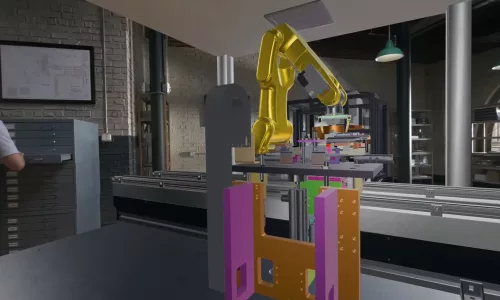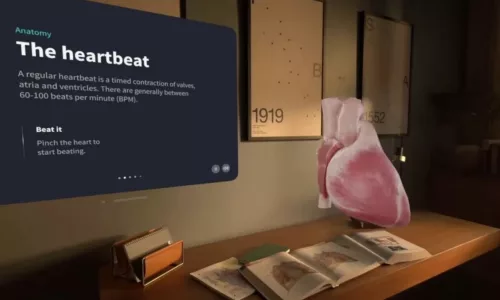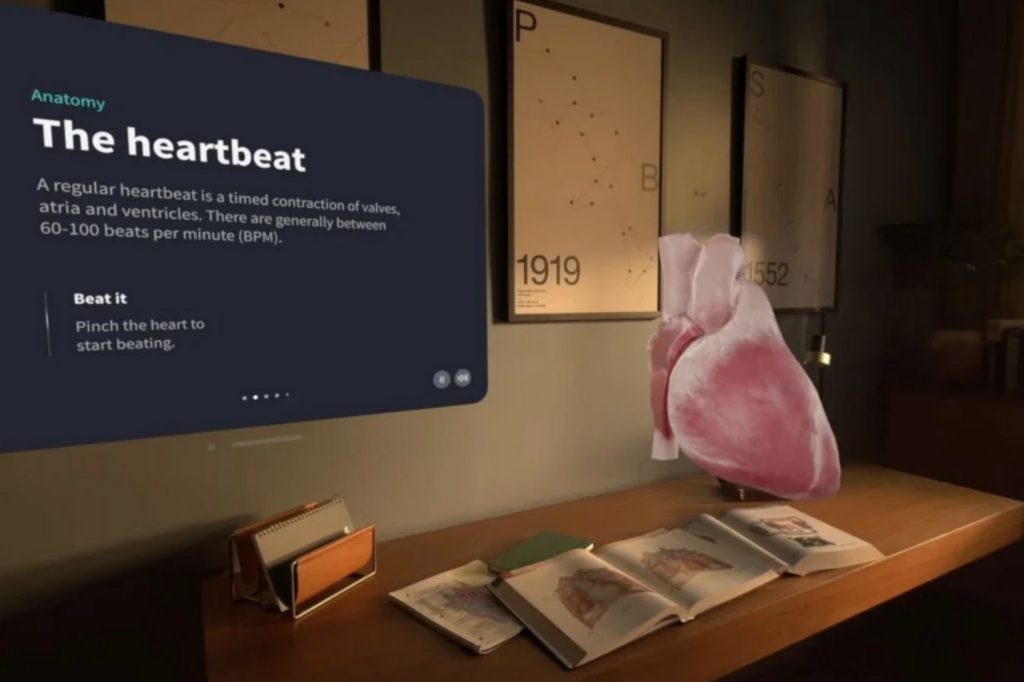Apple Vision Pro has just been announced with much fanfare. Not yet available on the French market, its potential impact on professional training is considerable. The Training Departments have every interest in following the matter closely… The opportunity also for a reminder on the VR2024 headsets.
The year 2023 witnessed several key trends in the development of VR headsets, including battery life, improved screen resolution, reduced device weight, and the integration of more motion tracking technologies. precise. Very affordable financially, the popular Quest 3 and Pico 4 thus offered high-quality immersive experiences, without the burden of heavy equipment or complex installation. They have made virtual reality training more accessible to businesses of all sizes.
The evolution of virtual reality (VR) headsets towards mixed reality (MR) is another major trend that has been gaining momentum. Mixed reality combines elements of virtual reality and augmented reality (AR), providing a broader spectrum of immersive, richer and more contextual experiences. This transition marks a significant shift in the way we interact with digital content, merging it seamlessly with the real world.
In training, this means that learners can manipulate virtual objects while remaining aware and interactive with their real-world environment, which enriches learning and improves knowledge retention. For example, in the medical sector, students can practice surgical procedures in a virtual environment superimposed on physical mannequins, providing a very realistic simulation. Similarly, in industrial training, operators can receive virtual instructions and guidance overlaid on real machines, making on-the-job learning and maintenance easier.
At the dawn of its launch on the French market, the Apple Vision Pro is already arousing keen interest for its disruptive potential in the field of professional training. This mixed and virtual reality headset, powered by Apple VisionOS operating system, promises to open new frontiers in learning and skill development.
First of all, the Apple Vision Pro should stand out for its ability to run applications with superior graphics quality, far surpassing the performance of existing VR headsets. In addition, with a resolution of 23 million pixels and a 3D Micro-OLED display, the Apple Vision Pro aims to guarantee exceptional visual clarity and precision. This remarkable image quality, combined with world-class sound immersion, will mark a significant advance in the context of VR training, where hyper-realism proves to be a key factor in engagement.
Another major innovation of Apple Vision Pro is its ability to capture eye movements, hand gestures and voice commands, without requiring the use of controllers. This feature enriches interaction with training content, making learning more intuitive. Additionally, its large storage capacity means that users will be able to access a vast library of training courses, ranging from simple introductory courses to more advanced courses.
The spatial aspect described for the Apple Vision Pro highlights another advance in the management of virtual spaces and augmented reality. This feature allows users to position and interact with virtual interfaces in the physical space around them. The user can thus place virtual elements, such as screens, dashboards, or 3D objects, in a physical space, such as a room in their home or office. For example, positioning a virtual screen on an empty wall and a 3D object on a table. What sets this capability apart is the precise and persistent spatial tracking. Once a virtual item is placed in a physical space, Apple Vision Pro remembers its position. You can leave the room, then come back later, and find the item exactly where you left it.
Trainers will thus be able to create tailor-made virtual workspaces, equipped with screens and tools necessary for their activity without requiring additional physical equipment. This will create a wide variety of interactive and immersive learning environments, where learners can interact with virtual educational materials integrated into their space.
Finally, by allowing learners to navigate and interact together in a fluid and natural way in a virtual space, Apple Vision Pro should facilitate a structured and interactive approach to training, transcending physical barriers and reinventing the way we learn and work in groups.
In conclusion, Apple Vision Pro offers immense potential to revolutionize professional training, by offering immersive, interactive, and collaborative learning experiences. However, the successful integration of this technology into existing training environments and its cost remain significant challenges to overcome.



